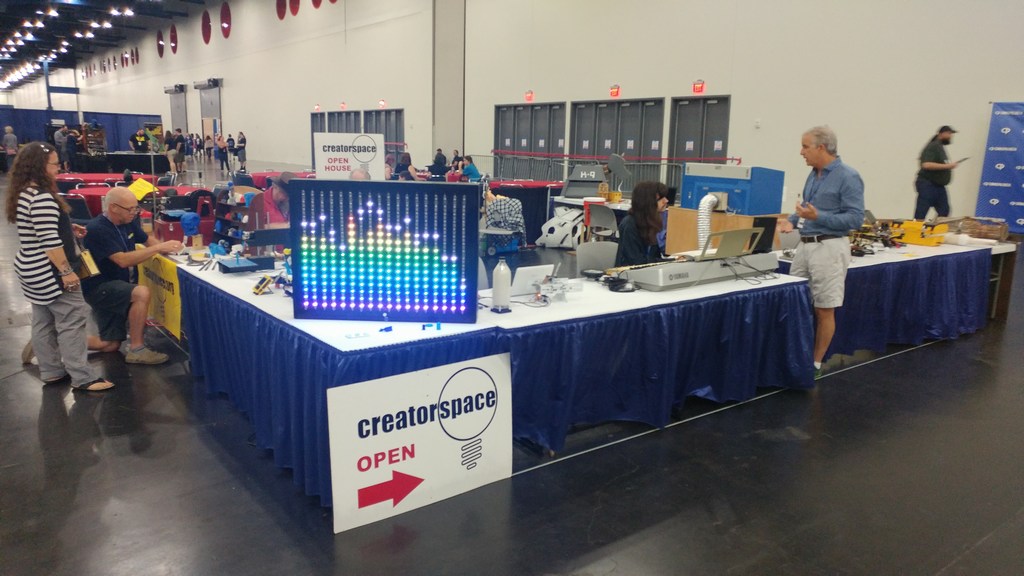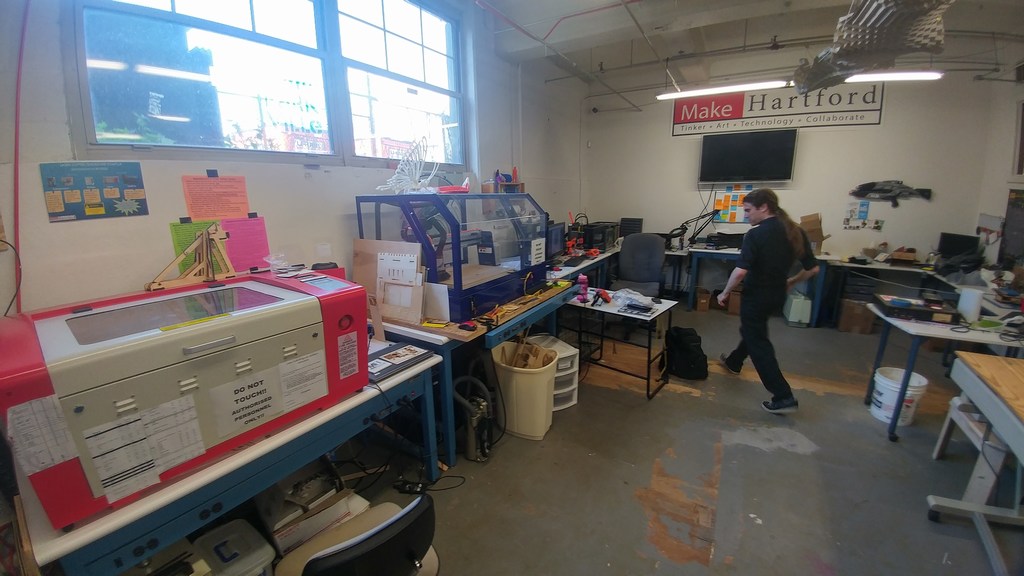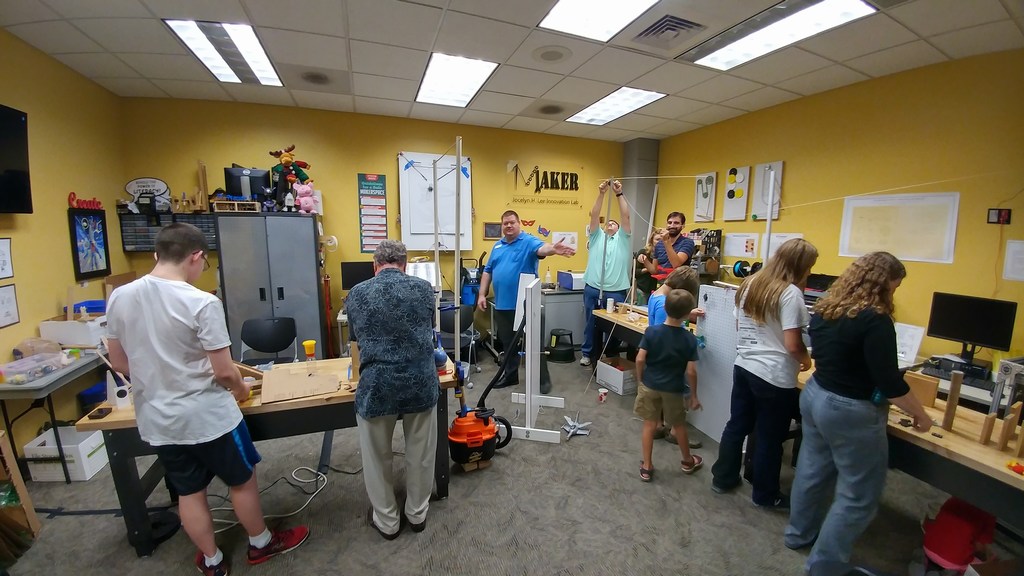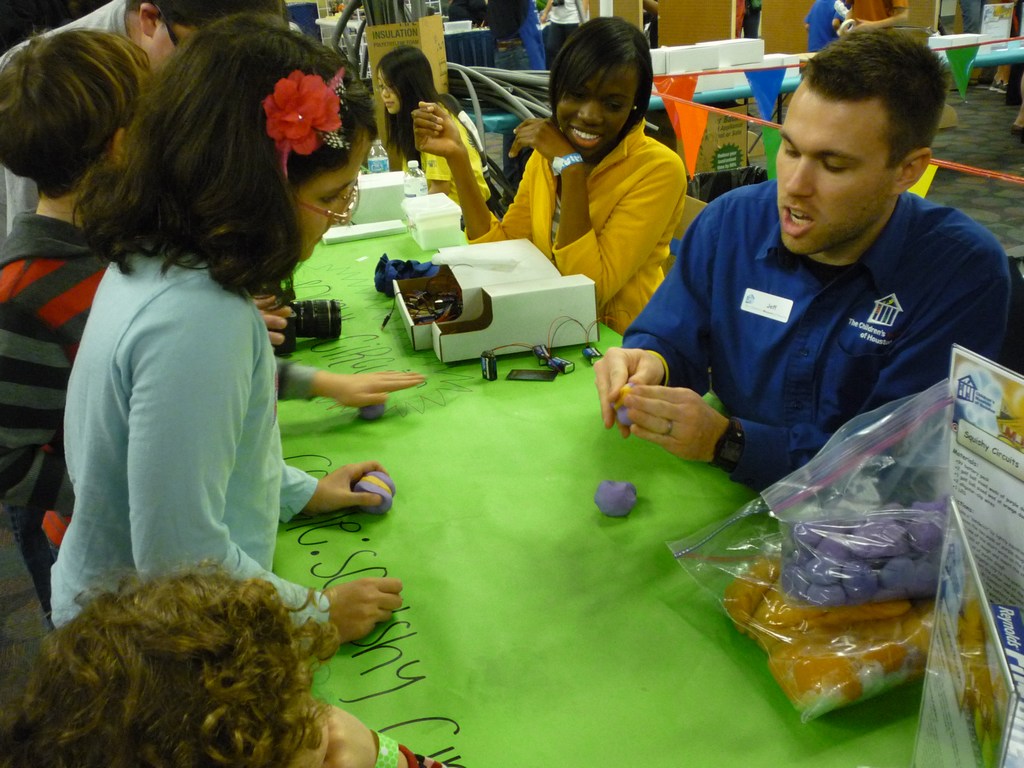Making a Revolution
by Fitz Walker
Today, the Maker revolution. The University of Houston presents this series about the machines that make our civilization run, and the people whose ingenuity created them.
A quiet revolution is afoot. An uprising where people of all ages, gender, and backgrounds gather together to build things, take things apart, and then use those parts to build better things. The Maker revolution.

Maker conventions are held world-wide and are highly attended. Photo Credit: Fitz Walker
This revolution is quietly taking place in many places called makerspaces (also known as hackerspaces). Where science, technology, engineering, and math, STEM for short, is the holy mantra. Where geeks and nerds are at the top of the food chain. Where no idea is too outrageous. No project too silly. A nexus of ultimate do-it-your-selfers.
Home brew building and tinkering is not new. Apple computers was said to have been started in a garage. But this is different. The makerspace is like a giant garage at which like-minded people can gather to share ideas and turn screws. Weld metal and build circuits. A community resource for a child to get help building his first robot, or get her science project finished. A brain trust that no matter what the question, someone is likely to have the answer.

Connecticut Makerspace has almost everything a builder needs. Photo Credit: Fitz Walker
The ubiquity of internet resources and social media have made making things far easier, but there still is no substitute for face-to-face interaction with knowledgeable people. This is the true value of the makerspace. It not only offers both the equipment you may need but brain power ripe for the picking. I've been involved with my local makerspace for some time and it has become like a second home. A place I can feel at ease talking about how I programmed my robot dog, or about my desire to build a flying car.
The Maker revolution is worldwide with annual conventions in almost every major US city and country. Places like Indonesia, Romania, and even Nepal host events. Local organizations are almost everywhere with at least one in every state. Schools and libraries have started their own Maker spaces. There is even a magazine dedicated to the movement. A movement so pervasive that even the White House has hosted a maker faire. Some have called it a new industrial revolution.

Makerspace at Freeman Library in Houston caters to all ages and holds instructional classes. Photo Credit: Fitz Walker
Seemingly every day, there are advances in 3-D printing, pocket sized computers, and desktop machining. The strangely named Raspberry Pi computer has sold over 5 million units in only three years. This little computer, the size of a deck of playing cards, is well known in the maker community and is used for everything from robotic controllers to video streaming. Companies are now selling desktop computer controlled milling machines for less than the cost of a high quality big screen TV. Something that was unheard of just a few years ago.
If I were to make an analogy, the modern maker is a bit like the early HAM radio movement of nearly a century ago. People who collaborate to entertain and solve problems, which in turn spawn new and disruptive technologies that is eventually used by the masses.
Kids and adults alike get hands-on experience at Makerspaces and Maker Faires. Photo Credit: Fitz Walker
So what does the future hold for the Maker revolution? Who knows, but knowing human nature and human ingenuity, there is no doubt it will continue to grow and evolve. Like all revolutions, once started, there is no turning back. Viva la revolución!
I'm Fitz Walker on behalf of the University of Houston, Interested in the way inventive minds work.
(Theme music)
Website for the Maker organization: http://makerfaire.com/
Comprehensive List of Makerspaces: https://wiki.hackerspaces.org/List_of_Hacker_Spaces
Raspberry Pi organization: www.raspberrypi.org
Arduino micro controllers used in millions of projects: http://www.arduino.cc/
This episode was first aired on November 15, 2016
